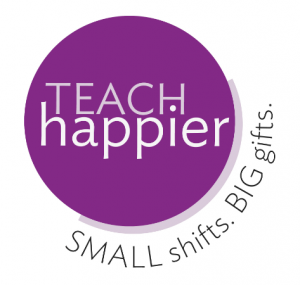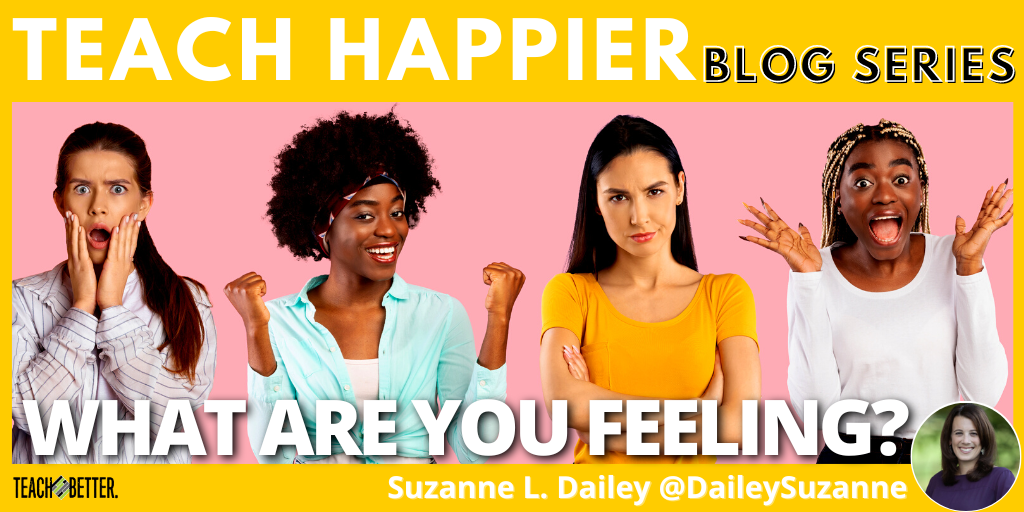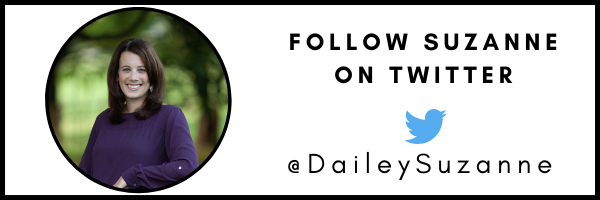TL;DR:
- Asking someone, “How are you feeling?” can sometimes be overwhelming to answer.
- Try asking, “What are you feeling?” instead.
How are you feeling?
When someone asks you, “How are you feeling?” does that sometimes feel complicated or hard? I sure think it does. When things are going really well, sometimes it’s challenging to go past a response more specific than “good.” And when things are really hard? To answer how I am feeling can sometimes seem impossible and complicated.
In this Teach Happier space, we celebrate our small two-degree shifts in thoughts, language, and actions. This month’s shift is so small and underwhelming, it may even be considered a one-degree shift in language. But it’s so powerful because it can impact our actions. And yes, this shift is also approved by my therapist. 🙂
So here it is, the 1-degree shift in language: It’s changing HOW are you feeling to WHAT are you feeling?
WHAT are you Feeling?
Let’s think that through. Instead of asking someone, “How are you feeling?” say, “What are you feeling?” I have found that doing this somehow simplifies and strengthens the interaction, conversation, and ultimately, connection.
Instead of asking someone, “How are you feeling?” say, “What are you feeling?” I have found that doing this somehow simplifies and strengthens the interaction, conversation, and ultimately, connection. Click To TweetI recently tried this at school. A co-worker is going through some really tough family stuff, and I’ve noticed that some colleagues are avoiding her because they don’t know what to say. If I were to ask her, “How are you feeling?” she may collapse with overwhelm; she is feeling so many things with so many layers. Instead, when I ask, “WHAT are you feeling?” she can quickly name feelings or emotions like, tired, confused, and maxed out. It gives me a little insight into her emotions and capacity.
This works with our students or our own children too. When we ask them, “How are you feeling?” more than likely, we’d get similar non-committed responses like, “Good.” “Fine.” “I don’t know.”
When I shift and ask, “What you are feeling?” Their response becomes pretty specific: “Happy.” “Tired.” “Excited.” “Nervous.” Proud.” Just like with adults, these types of responses provide a more specific level of insight.
[scroll down to keep reading]Naming Emotions
Social science and positive psychology tell us why. Dr. Brene Brown tells us in Atlas of the Heart, “We have compelling research that shows that language does more than just communicate emotion…Language is our portal to meaning-making, connection, healing, learning, and self-awareness” (xxi).
I don’t have the beautiful language Dr. Brown has, but in my plain life and in my plain words, I find that when we ask someone WHAT they are feeling, it kind of de-personalizes it altogether and helps name the emotion without alllll of the weight, attachment, and anticipated elaboration.
Our invitation this week is to try this teeny tiny 1-degree shift in language and move from asking someone, “How are you feeling?” to “WHAT are you feeling” and see if that helps others feel seen, heard, and supported.
What a great feeling that would be.
 Small Shifts, BIG Gifts!
Small Shifts, BIG Gifts!
Give it a try! Try asking someone WHAT they are feeling and see if that strengthens the conversation and opportunity to connect.
About Suzanne Dailey
Suzanne Dailey is a proud member of the Teach Better Family! She is an instructional coach in the Central Bucks School District where she has the honor and joy of working with elementary teachers and students in 15 buildings. Suzanne is Nationally Board Certified, a Fellow of the National Writing Project, and has a master’s degree in Reading. She is dedicated to nurturing and developing the whole child and teacher. Suzanne lives in Doylestown, Pennsylvania with her husband and two children.





